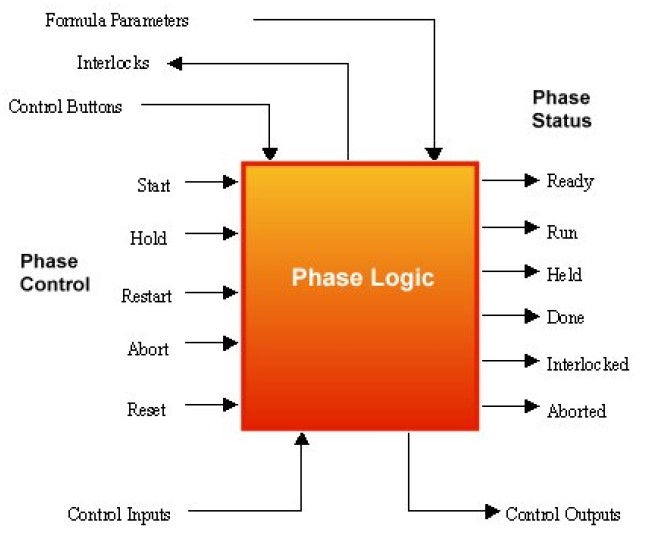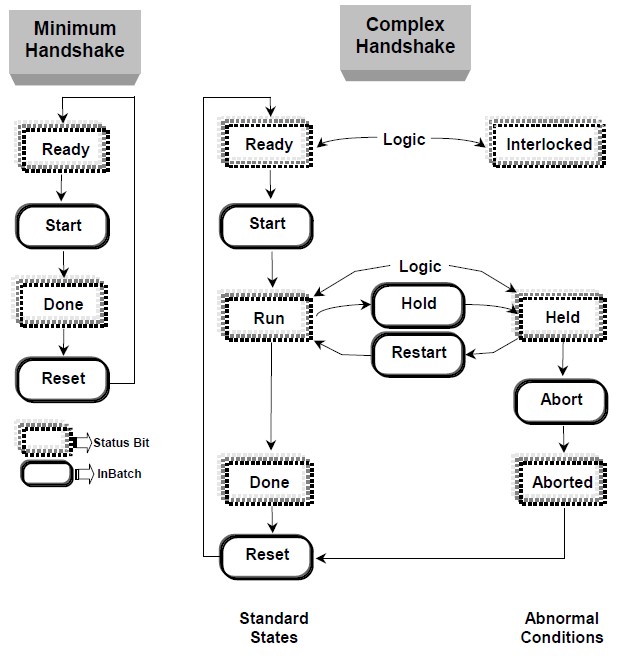Topic 4.3.1: Phases and Phase Tags
- Phase Types
- There are three types of process phases and four types of transfer phases. Process phases can be either automatic, manual, and data. Transfer phases are classified as either automatic, semiautomatic, manual, or data.
- Automatic: Automatic type phases are executed by the control system. Therefore, there must be phase logic in the control system for the phase to execute. Examples of automatic phases are bulk add, discharge, heat, and mix.
- Manual: Manual phases are manually executed. The control system is not involved in the execution of a manual phase. Therefore, there is no associated phase logic. Examples of manual phases are manual add and test.
- Semi-Automatic (Transfer only): Semi-automatic type phases are only associated with transfer type phases. Successful execution requires both the operator and the control system to work together. Therefore, semi-automatic phases require control system phase logic. An example of a semi-automatic phase is Drum Add.
- Data: Data phases are executed by the batch management system. They have no phase control or status tags for handshaking with the control system, and do not require operator acknowledgement. They do not have control button capability, but do allow formula parameter assignments.
- When a data phase is encountered during batch execution, the batch manager automatically writes (downloads) all parameters values to the control system.
- Phase Logic
- Phase Logic refers to the steps and sequences in the control system that are exercised during the execution of a phase. Phase logic will make the control system program very structured.
- Phase logic is required to support every phase requiring automatic or semi-automatic control.
- For example; if a process class of blenders has three phases, each blender unit assigned to this process class will require three phase logic blocks. The logic may be identical but the physical I/O and internal address assignments are different for each blender in the process.
- Phases that are manually executed by operators do not require phase logic.

- Phase Parameters: Phase parameters are used to configure, control, and monitor a phase. There are four types of parameters:
- Phase Control and Status Bits.
- Formula Parameters.
- Interlocks.
- Control Buttons.
- The following diagrams illustrate a typical Minimum and Complex handshake:

- Complex Handshakes make use of the maximum number of Control/Status bits.
- Tags for complex handshakes are created when the Select All button is clicked in the Edit Phase Control/Status dialog box.
- Customers may use Minimum, Maximum or any combination in between as their application requires.
Last modified: Friday, 22 May 2020, 2:10 PM
